Among the most fascinating and disturbing animals on Earth, chameleons are endowed with many unique adaptations - independently rotating eyes, a projecting tongue, a prehensile tail, and (last but not least) The ability to change colors - so much so that they seem to have been abandoned. The sky from another planet. Learn 10 basic facts about chameleons, from the origin of their name to their ability to see ultraviolet light.
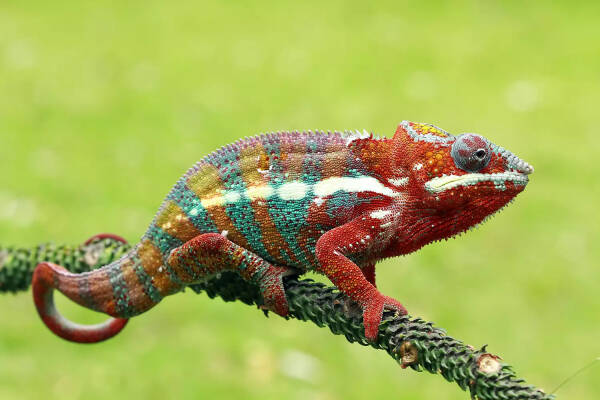
A colorful chameleon in Indonesia

Male long-nosed chameleon in Ouhimana Reserve, Madagascar
As far as paleontologists know, the first chameleons evolved shortly after the extinction of the dinosaurs 65 million years ago. The earliest species discovered was the short-haired Anqingsaurus, which lived in the middle Paleocene of Asia. However, there is some indirect evidence that chameleons existed 100 million years ago, during the mid-Cretaceous period, and may have originated in Africa, which could explain their large presence in Madagascar. Most convincingly and logically, chameleons must share a last common ancestor with closely related iguanas and "dragon lizards," which probably lived toward the end of the Mesozoic Era.
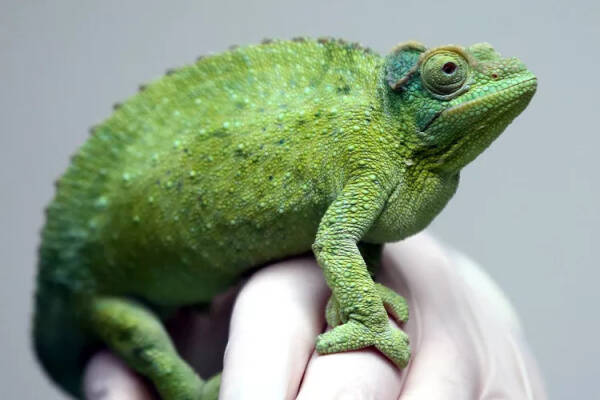
Chameleons are classified as "Old World" lizards because they are native only to Africa and Eurasia, and consist of more than a dozen named genera and more than 200 species. Broadly speaking, these reptiles are characterized by their small size, quadrupedal posture, extendable tongues, and independently rotating eyes. Most species also have prehensile tails and the ability to change color, which can signal other chameleons and camouflage them. Most chameleons are insectivores, but there are some larger chameleon species that feed on small lizards and birds.
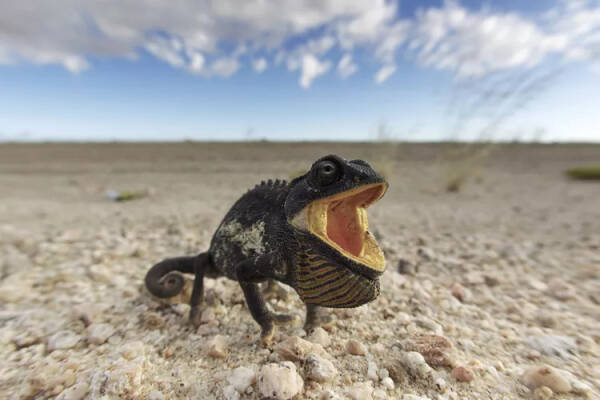
Like most animals, chameleons have been around much longer than humans, which explains why we find references to this reptile in the oldest written sources. The Akkadians—an ancient culture that ruled modern-day Iraq more than 4,000 years ago—called the lizard nes qaqqari, literally meaning "lion of the earth," a usage that was followed over the next few centuries. civilizations inherited it, unchanged: first the Greek "khamaileon", then the Latin "chamaeleon", and finally the modern English "chameleon", meaning "ground lion".
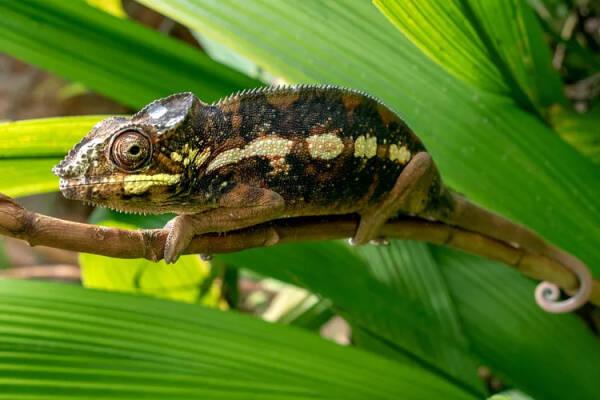
The island of Madagascar on the east coast of Africa is famous for its diversity of lemurs (an arboreal primate) and chameleons. Three genera of chameleons (Bruce's chameleon, Kaluma's chameleon, and Fosifer's chameleon) are endemic to Madagascar, including the caterpillar-sized pygmy leaf chameleon, the gigantic (nearly two pounds) Parson's chameleon, the brightly colored chameleon the Black Panther Chameleon and the critically endangered Tarzan Chameleon (named not for the storybook Tarzan but for the nearby village of Tarzanville).
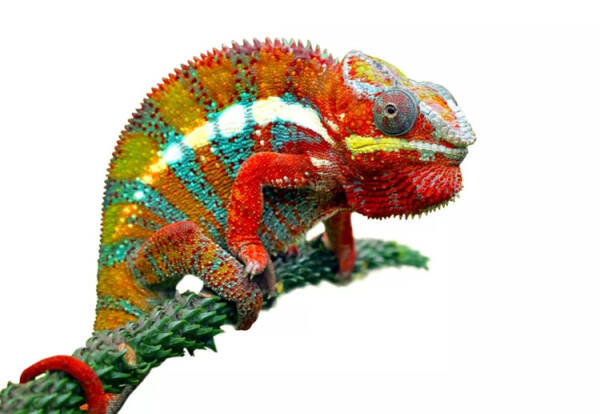
While chameleons aren't as adept at blending into their surroundings as they are portrayed in cartoons—they can't become invisible or transparent, or imitate polka dot or plaid patterns—these reptiles are still very talented. Most chameleons can change their color and pattern by manipulating pigments and crystals of guanine (an amino acid) embedded in their skin. This trick is great for hiding from predators (or curious humans), but most chameleons will change color to signal other chameleons. For example, brightly colored chameleons dominate in male-on-male competition, while more subdued colors indicate defeat and submission.
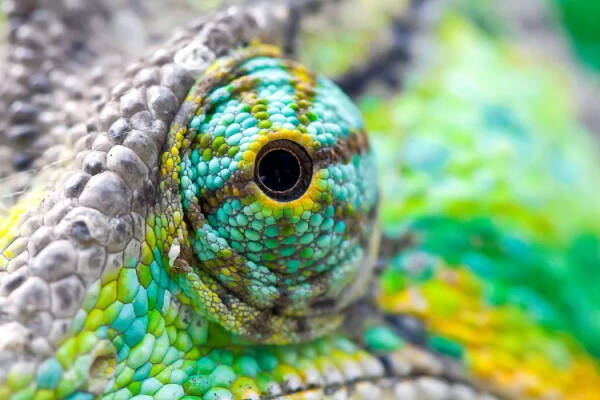
UV radiation has more energy than "visible" light that humans can detect, and can be dangerous in large doses. One of the most mysterious things about chameleons is their ability to see light in the ultraviolet spectrum. It is speculated that their UV sensing ability evolved to allow chameleons to better target prey. It may also be related to the fact that chameleons become more active, social and interested in breeding when exposed to UV rays, possibly because UV rays stimulate the pineal gland in their tiny brains.

For many people, the most disturbing thing about chameleons are their eyes, which move independently in their sockets to provide nearly 360 degrees of vision. In addition to sensing ultraviolet light, they are also good at judging distances because each eye has excellent depth perception. This allows the lizard to target tasty prey insects from up to 20 feet away without using binocular vision. The chameleon's ears are relatively primitive and can only hear sounds in an extremely limited range of frequencies, which somewhat balances out its excellent sense of sight.
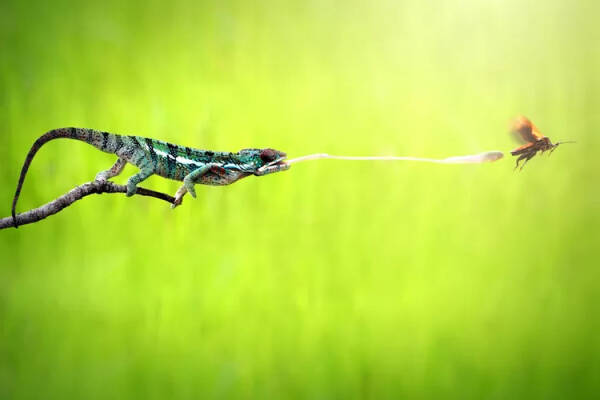
A chameleon's independently moving eyes are of little use if it can't complete its deal on prey. That's why all chameleons are equipped with long, sticky tongues—usually two to three times the length of their bodies—that they forcefully pop out of their mouths. Chameleons have two unique muscles that accomplish this task: the accelerator muscle, which launches the tongue at high speeds, and the hypoglossal muscle, which pulls the tongue back with prey attached to the end. Amazingly, chameleons can open their tongues at full force even when temperatures are cold enough to make other reptiles extremely sluggish.
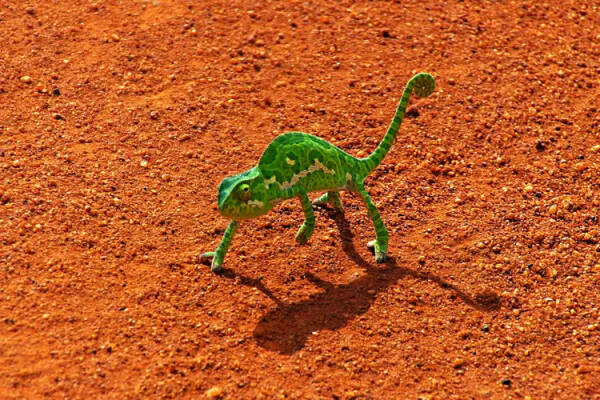
Perhaps because of the extreme recoil produced when the tongue pops out, the chameleon needs a way to securely attach to the branch. Nature's solution is to "engage" the feet. A chameleon's front feet have two outer toes and three inner toes, and its hind feet have two inner toes and three outer toes. Each toe has sharp nails that can penetrate the bark of trees. Other animals - including perching birds and sloths - have evolved similar anchoring strategies, although chameleons' five-toed anatomy is unique.
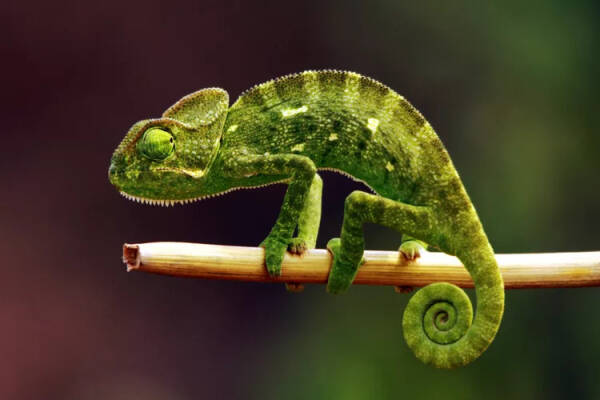
As if their jointed digits weren't enough, most chameleons (except for the smallest) also possess prehensile tails for wrapping around tree branches. Their tails provide the chameleon with greater flexibility and stability when climbing up or down trees, and, like their feet, help resist the recoil of their explosive tongues. When a chameleon rests, its tail is curled into a tight ball. Unlike some other lizards that can shed and regrow their tails multiple times throughout their lives, chameleons cannot regenerate their tails if they are severed.
animal tags: chameleon
We created this article in conjunction with AI technology, then made sure it was fact-checked and edited by a Animals Top editor.